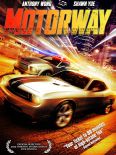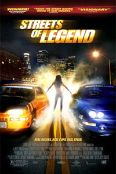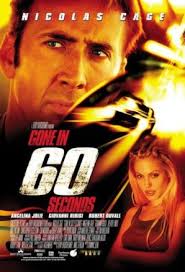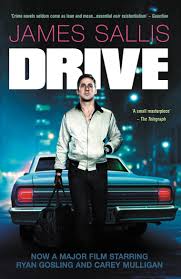Friday 28 February 2014
YouTube clips that have influenced my main task
Born to race - http://www.imdb.com/video/screenplay/vi3083313433/
Fast and furious 6 - http://www.imdb.com/video/imdb/vi3225003545/
Fast and furious 1 - http://www.imdb.com/video/imdb/vi3583574041/
Fast and furious Tokyo drift - http://www.imdb.com/video/screenplay/vi233963801/
2 Fast 2 Furious - http://www.imdb.com/video/screenplay/vi2863857945/
Redline - http://www.imdb.com/video/screenplay/vi1216545049/
Born to race - http://www.imdb.com/video/screenplay/vi3083313433/
Fast and furious 6 - http://www.imdb.com/video/imdb/vi3225003545/
Fast and furious 1 - http://www.imdb.com/video/imdb/vi3583574041/
Fast and furious Tokyo drift - http://www.imdb.com/video/screenplay/vi233963801/
2 Fast 2 Furious - http://www.imdb.com/video/screenplay/vi2863857945/
Redline - http://www.imdb.com/video/screenplay/vi1216545049/
Thursday 27 February 2014
Table analysis of genre film openings
Typical Elements of the openings............ Genre films
Film title
Year
Director
Representation of gender/class/ethnicity/age
Mise-en-scene - Props/lighting/setting/framing/posture/gesture/use of colour
Use of camera - Movement/Composition/angles/framing
Sound
Unrestricted/Restricted Narration
Form (structure/narrative order/no. of lines of action)
Multi-Generic Elements/Sub-genres
Target Audience
Titles - whats interesting and innovative/ why?
Typical Elements of the openings............ Genre films
Film title
Year
Director
Representation of gender/class/ethnicity/age
Mise-en-scene - Props/lighting/setting/framing/posture/gesture/use of colour
Use of camera - Movement/Composition/angles/framing
Sound
Unrestricted/Restricted Narration
Form (structure/narrative order/no. of lines of action)
Multi-Generic Elements/Sub-genres
Target Audience
Titles - whats interesting and innovative/ why?
Genre - is a category of artistic, musical or literary composition characterised by a particular style, form or content.
List of film genres -
Action - action films usually include high energy, big-budget physical stunts and chases, possibly with rescues, battles, fights, escapes, destructive crises (floods, explosions, natural disasters, fires, etc.), non-stop motion, spectacular rhythm and pacing, and adventurous, often two-dimensional 'good-guy' heroes (or recently, heroines) battling 'bad guys' - all designed for pure audience escapism. Includes the James Bond 'fantasy' spy/espionage series, martial arts films, so-called 'blaxploitation' films, and some superhero films. A major sub-genre is the disaster film. See also Greatest Disaster and Crowd Film Scenes and Greatest Classic Chase Scenes in Films.
Adventure - Adventure films are usually exciting stories, with new experiences or exotic locales, very similar to or often paired with the action film genre. They can include traditional swashbucklers, serialized films, and historical spectacles (similar to the epics film genre), searches or expeditions for lost continents, "jungle" and "desert" epics, treasure hunts, disaster films, or searches for the unknown.
Comedies - are light-hearted plots consistently and deliberately designed to amuse and provoke laughter (with one-liners, jokes, etc.) by exaggerating the situation, the language, action, relationships and characters. This section describes various forms of comedy through cinematic history, including slapstick, screwball, spoofs and parodies, romantic comedies, black comedy (dark satirical comedy), and more. See this site's Funniest Film Moments and Scenes collection - illustrated, and alsoPremiere Magazine's 50 Greatest Comedies of All Time.
Crime - (gangster) films are developed around the sinister actions of criminals or mobsters, particularly bankrobbers, underworld figures, or ruthless hoodlums who operate outside the law, stealing and murdering their way through life. Criminal and gangster films are often categorized as film noir or detective-mystery films - because of underlying similarities between these cinematic forms. This category includes a description of various 'serial killer' films.
Dramas - are serious, plot-driven presentations, portraying realistic characters, settings, life situations, and stories involving intense character development and interaction. Usually, they are not focused on special-effects, comedy, or action, Dramatic films are probably the largest film genre, with many subsets. See also melodramas, epics (historical dramas), or romantic genres. Dramaticbiographical films (or "biopics") are a major sub-genre, as are 'adult' films (with mature subject content).
Epics/historical - films include costume dramas, historical dramas, war films, medieval romps, or 'period pictures' that often cover a large expanse of time set against a vast, panoramic backdrop. Epics often share elements of the elaborate adventure films genre. Epics take an historical or imagined event, mythic, legendary, or heroic figure, and add an extravagant setting and lavish costumes, accompanied by grandeur and spectacle, dramatic scope, high production values, and a sweeping musical score. Epics are often a more spectacular, lavish version of a biopic film. Some 'sword and sandal' films (Biblical epics or films occuring during antiquity) qualify as a sub-genre.
Horror - films are designed to frighten and to invoke our hidden worst fears, often in a terrifying, shocking finale, while captivating and entertaining us at the same time in a cathartic experience. Horror films feature a wide range of styles, from the earliest silent Nosferatu classic, to today's CGI monsters and deranged humans. They are often combined with science fiction when the menace or monster is related to a corruption of technology, or when Earth is threatened by aliens. The fantasy and supernatural film genres are not usually synonymous with the horror genre. There are many sub-genres of horror: slasher, teen terror, serial killers, Satanic, Dracula, Frankenstein, etc. See this site's Scariest Film Moments and Scenes collection - illustrated.
Musical/dance - films are cinematic forms that emphasize full-scale scores or song and dance routines in a significant way (usually with a musical or dance performance integrated as part of the film narrative), or they are films that are centered on combinations of music, dance, song or choreography. Major subgenres include the musical comedy or the concert film. See this site's Greatest Musical Song/Dance Movie Moments and Scenes collection - illustrated.
Sci-fi - films are often quasi-scientific, visionary and imaginative - complete with heroes, aliens, distant planets, impossible quests, improbable settings, fantastic places, great dark and shadowy villains, futuristic technology, unknown and unknowable forces, and extraordinary monsters ('things or creatures from space'), either created by mad scientists or by nuclear havoc. They are sometimes an offshoot of fantasy films (or superhero films), or they share some similarities with action/adventure films. Science fiction often expresses the potential of technology to destroy humankind and easily overlaps with horror films, particularly when technology or alien life forms become malevolent, as in the "Atomic Age" of sci-fi films in the 1950s.
War - (and anti-war) films acknowledge the horror and heartbreak of war, letting the actual combat fighting (against nations or humankind) on land, sea, or in the air provide the primary plot or background for the action of the film. War films are often paired with other genres, such as action, adventure, drama, romance, comedy (black), suspense, and even epics and westerns, and they often take a denunciatory approach toward warfare. They may include POW tales, stories of military operations, and training. See this site's Greatest War Movies (in multiple parts).
Westerns - are the major defining genre of the American film industry - a eulogy to the early days of the expansive American frontier. They are one of the oldest, most enduring genres with very recognizable plots, elements, and characters (six-guns, horses, dusty towns and trails, cowboys, Indians, etc.). Over time, westerns have been re-defined, re-invented and expanded, dismissed, re-discovered, and spoofed.
Thriller is a genre of literature, film, and television programming that uses suspense, tension, and excitement as its main elements. Thrillers heavily stimulate the viewer's moods, giving them a high level of anticipation, ultra-heightened expectation, uncertainty,surprise, anxiety and terror. Films of this genre tend to be adrenaline-rushing, gritty, rousing and fast-paced.
A thriller provides the sudden rush of emotions, excitement, and exhilaration that drive then arrative, sometimes subtly with peaks and lulls, sometimes at a constant, breakneck pace. It keeps the audience on the "edge of their seats", akin to a sensation of hanging from a cliff, as the plot builds towards a climax. Literary devices such as red herrings, plot twists, and cliffhangers are used extensively. A thriller is usually a villain-driven plot, whereby he or she presents obstacles that the protagonist must overcome.
Tuesday 25 February 2014
Identification
When filming our main task we did a lot of improvisation and took a lot of time. So our previous storyboard will have some things that stay the same however we did change a lot and add a few things in because we thought it would look better that way. We used a good range of camera angles that i hope can easily be identified/spotted.
Thursday 13 February 2014
Film openings
Film openings are used to show the audience of the film setting, introduce the main characters and stars, it reveals the genre of the film and shows briefly what its going to be about.
Most film openings will include normal/ general conventions of a film opening;
There are many types of openings, these are:
Most film openings will include normal/ general conventions of a film opening;
- Main charachters
- Opening credits
- Film company title
- Listing of producer and director
There are many types of openings, these are:
- An animated title sequence - creatvie portrait
- A narration over - nengages audience audibly aswell as visually
- A compilation of photographs - portrays themes and relationships between characters
- A Flash-forward - shows how film is concluded
- A Flash back - background information related to storyline
- A Pan of an establishing shot
Wednesday 12 February 2014
Brief things when thinking about anylsing 3 film openings these are somethings i would take into consideration;
Costumes and props - What are they wearing? How does it fit the mood? Are the costume changes important and noticeable? How well did the props play in? Were they useful or too obtrusive?
Production design, costumes, and fx: color, light, set design. "Realism" or "Fantasy"?
Setting and Background - Does the setting fit the scene? Are the background actions distracting or do they steal your attention? Is it believable or way too fake?
Camera Techniques - What sort of shots does the director typically use and what is the impact of them?
How does the music fit in? Is it distracting or too soft? Does it help move the movie along?
Sound and music: diegetic and non-diegetic sound
Genre: what "kind" of movie is it, and how do you know?
Costumes and props - What are they wearing? How does it fit the mood? Are the costume changes important and noticeable? How well did the props play in? Were they useful or too obtrusive?
Production design, costumes, and fx: color, light, set design. "Realism" or "Fantasy"?
Setting and Background - Does the setting fit the scene? Are the background actions distracting or do they steal your attention? Is it believable or way too fake?
Camera Techniques - What sort of shots does the director typically use and what is the impact of them?
How does the music fit in? Is it distracting or too soft? Does it help move the movie along?
Sound and music: diegetic and non-diegetic sound
Genre: what "kind" of movie is it, and how do you know?
Narration – the flow of information – Range and depth
The range of story information – who knows what
when.
Ø
Unrestricted – the audience knows more, sees more, hears,
more than all the characters. Also called omniscient narration, especially in
historical narratives, where the audience knows the outcome of an actual
historical event (i.e., Civil War) that the characters are living on screen.
Ø
Restricted – The characters and the audience learn story
information at the same time. This may be useful in creating suspense in a
horror or mystery. However, Alfred Hitchcock, known for the suspense genre,
prefers unrestricted narration, so that the audience will fear for the
protagonist, who doesn’t know what we know.
Restricted and unrestricted are
opposite ends of a continuum. Most films are a mixture.
Title sequence
A title sequence is the method by which films or television programs present their title, key production and cast members, or both, utilizing conceptual visuals and sound. It usually follows but should not be confused with the opening credits, which are generally nothing more than a series of superimposed text.
Problems with our main task in Megans shed.
The problems we whilst in megans shed was that we were filming in a dark place and we had to be cautious of shadows getting in the way.
We had to ration the fake blud and use minimum amounts of make up.
It was a small tightly enclosed place so we had to make use of the space we had whilst trying to perform our different camera angles.
Another problem we had was that whilst wew were filming my watch went of.
We had to ration the fake blud and use minimum amounts of make up.
It was a small tightly enclosed place so we had to make use of the space we had whilst trying to perform our different camera angles.
Another problem we had was that whilst wew were filming my watch went of.
currently
Currently we have finished our filming and we are now doing mitches monologue which acts as a voice over for most of the clip.
Tuesday 11 February 2014
Fast and furious 6 opening sequence
http://www.slideshare.net/Katrinabrookes/fast-and-furious-6-opening-sequence

These pictures above represent bruises and cuts, Amy and megan did and great job in doing the make up. The make up consists of make up and fake blood. In the short clip i am suppose to be playing a role of being unconsious and mitch just looks like hes been battered up. This was taken place in megans shed at the back of her house, it was a great place to shoot in which we took advantage of.
Initial scripting
Unfortunately this picture is upside down but otherwise this is our inital script for our main task, we did this script to inform us of what we had to say at different points of time.
Title, props and camera angles
This picture consists of the title name we chose for our main task, It also has the camera angles that we have tried to make use of aswell as the props list to the left side. These are important because it identifys what objects we need to use. We have identified our main task as being and Action/Thriller combination.
Initial story board
This was our initial storyboard until it came closer to the time of filming we improvised. We Re-Wrote our script, not entirely but some bits. We also have our initial scripting underneath however we improvised over that as well and decided to introduce more sentences and movements. We thought the things we added would help our main task to be a bit better than our original previous ideas.

Monday 10 February 2014
Reference
I think it is safe to say that we recognise our main task as being similar to fast and furious
Main task - Day 1 shooting/problems
Our group went to tesco about 15 minutes drive away from school.
We started shooting our main task outside tesco, the first 5 minutes were good but then we ran into a few problems.
Our problems:
It was very cold to stand outside shooting
It was very windy so that might have reduced the quality of the clip
we used two school film cameras and amy's camera, amy's camera was very high quality, however the school cameras were very poor. This would effect our editing and could be quite noticable.
Cars were moving in and out from tesco so everytime we shot a clip there could be different cars in the outside frame.
when we shot from inside the car we had to be careful that the camera women 'amy' wasnt in the middle windscreen mirror whilst holding the camera from behind.
We started shooting our main task outside tesco, the first 5 minutes were good but then we ran into a few problems.
Our problems:
It was very cold to stand outside shooting
It was very windy so that might have reduced the quality of the clip
we used two school film cameras and amy's camera, amy's camera was very high quality, however the school cameras were very poor. This would effect our editing and could be quite noticable.
Cars were moving in and out from tesco so everytime we shot a clip there could be different cars in the outside frame.
when we shot from inside the car we had to be careful that the camera women 'amy' wasnt in the middle windscreen mirror whilst holding the camera from behind.
Understanding
From our continuity excersise we learnt that setting up cameras was longer than we thought it would be so in order to avoid this, we made sure the cameras were charged before we went out to our locations to film.
Audience
Age - Our group discussed what we should rate our main task. We had to choose this wisely as the main taks could include some explicit language so we had to identify the correct target audience for our intentions. We choose to rate our movie a 15 as it has a little bit of bad language in parts and being that it is a car kind of racing movie we figured thaat over 15s know more specific things about cars rather than younger kids who just think cars are cars and races are races. We know that lots of teens get their first car from around 17-21 so we figured they would be into car action movies.
Gender - I think the majority of male sex's will watch this movie, that is my prediction.This is because sterotypically men are into cars more than women are, therefore men would be more into it.
Social group - A group that have knowledge and understanding within the car industry, also into car racing and quite dramitical thriller scenes from racing custommised and modified cars.
Gender - I think the majority of male sex's will watch this movie, that is my prediction.This is because sterotypically men are into cars more than women are, therefore men would be more into it.
Social group - A group that have knowledge and understanding within the car industry, also into car racing and quite dramitical thriller scenes from racing custommised and modified cars.
Name for our main task
Our group sat down to have a discussion of what our main task should be called, we came up with this name; c,b,a it stands for clutch, brake, accelerate. We felt this name would compliment our main task and have a correlation towards it.
Friday 7 February 2014
Questionnaire review & Feedback
With our interview questionnaire we recognised that horror and action were the most popular within our interview. Fiction based films had the majority of votes. A lot of people preferred the main characters to be mixed. The background of a film that the people most liked was 'urban'. The majority of people said yes to watching a car film even if they are not really into racing car films.They also preferred music to be played in the background in a film. A lot of people said that the status of the film would not effect the quality. We asked a question about what were peoples favourite films and luckily we had one person who said fast and furious 2 which relates to our main task. Favourite actors that were chosen were; De caprio ll, scarlet johnson, paul walker and vin diesal.
In our decision making process in relation to an answer in the questionnaires one of the answers were that action films were recognised to be quite popular.
This related to our film because our film is a thriller/action/crime.
Here is a bar graph and pie chart to represent our result findings.

Subscribe to:
Posts (Atom)












/_derived_jpg_q90_116x177_m0/057334H1.jpg?partner=allrovi.com)








